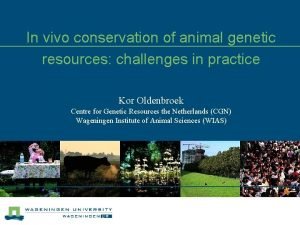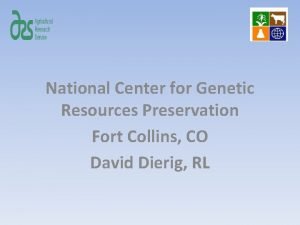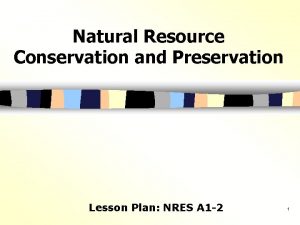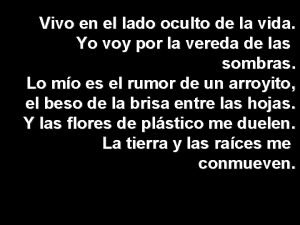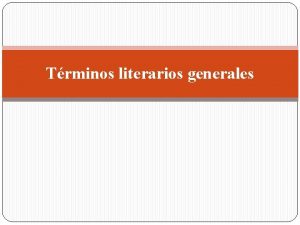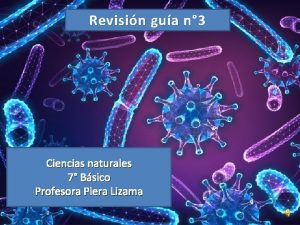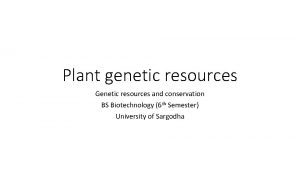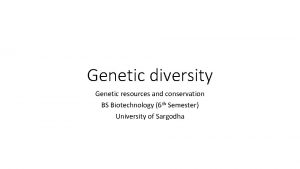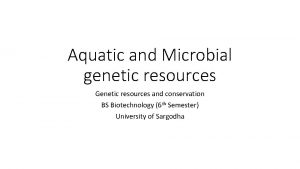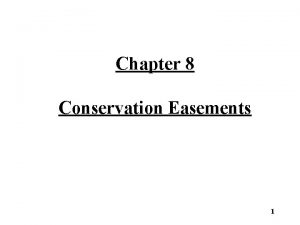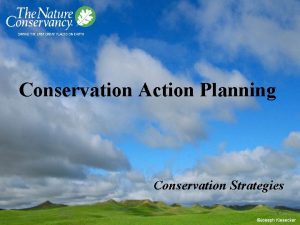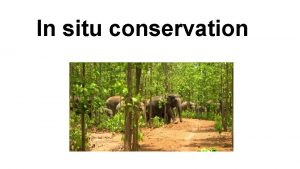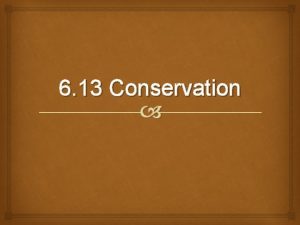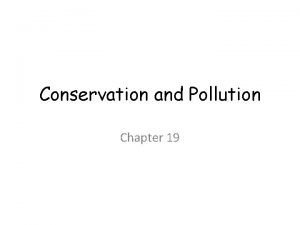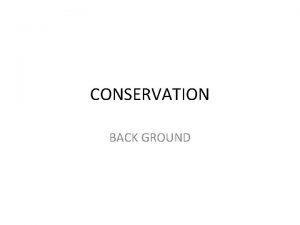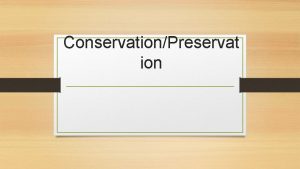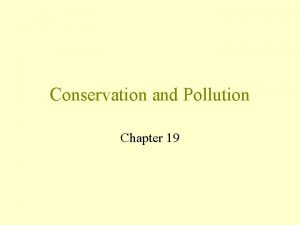In vivo conservation of animal genetic resources challenges
















- Slides: 16

In vivo conservation of animal genetic resources: challenges in practice Kor Oldenbroek Centre for Genetic Resources the Netherlands (CGN) Wageningen Institute of Animal Sciences (WIAS)

In vivo conservation of farm An. GR Theory Optimal programs and guidelines Practice Dutch experiences in cattle, pigs, goats, sheep, poultry, horses and dogs

Issues in cattle n Dutch Friesian (rotation) n MRIJ (prog. testing; organic? ) n Deep Red (adaptation) n Groningen White headed (change) n Red Friesian (change) n White belted (phenotype) n Line back (breed? )

Issues in pigs n No Dutch breed left n Low number outside pig intensive farming system n Bentheimer (regional; linebreeding to avoid inbreeding)

Issues in goats n Dutch landrace (Nordic) n Based on a few founders n Crossbreeding? with? n Dutch Black and White? n Extinct? / Fenotype (color pattern is original) n Influence of Saanen breed

Issues in sheep n Dairy sheep n Cheese production n Black Blazed n Mixture; short history n Hobby breed (pasture maintenance)

Issues in heath sheep n Regional breeds n Hobby breeders <> flocks n Nature management n Strict rules for subsidies n Rotation schemes

Issues in chicken n Hobby breeding n 18 Dutch (different) breeds n No population management n Fenotype dominant n Inbreeding (used as methodology to reach goals)

Four native Dutch horse breeds

Dutch Harness (Warm Blood) horse n Based on Groningen and Gelderlander breed n High contributions of a limited number of sires (breed standard!) n Delta F = 2 % per generation! n 1970: Hackney influence n 1990: Am. Saddlebred n 2010: ? ? ? n Breeding advice based on relationship

Horses issues (local breeds, base DWH) n Groningen breed n 1970: one sire left n Reconstructed with NW Europe breeds n Three different “herdbooks” n Gelderlander n Important breed up to 1970 n No clear breeding goal n Genetic purity in discussion

Issues in horses n Friesian n Three bottle necks n Inbreeding depression n Restricted matings / male n Draught n Related to Belgium Draught horse n “Show” animal

Issues in dogs (7 Dutch breeds) n n n Small populations with sometimes subpopulations Males are castrated early in life Owners of females have or want to have no experience with litters Strict restrictions on the number of litters per female (welfare issue) Restricted number of matings per male (herd book issue; females)

Opportunities and threats Opportunities n Support breeding organizations n Organic production n n Threats n Focus organizations main stream (genomic selection) n Sanitary rules main stream n High (labor) costs, less income n Exotic breeds (Scottish Highland) n Breed standard n Hobby breeders / herdbooks Regional products Nature management Green care farms Hobby farming / breeding

Issues (theory versus practice) n Change in production goal (ex situ in vivo; adaptive traits) n Breed definition: genetic purity n Breeding program: number of males n Population size was or is critical n Effective population size: inbreeding (user friendly programs are needed) n Selection: often too strong in males n Mating: limitations in number of matings per sire / dam

Thank you! Questions?
 In vivo conservation
In vivo conservation Evolutionary drift
Evolutionary drift Genetic programming vs genetic algorithm
Genetic programming vs genetic algorithm Genetic programming vs genetic algorithm
Genetic programming vs genetic algorithm Genetic drift vs genetic flow
Genetic drift vs genetic flow Genetic drift vs genetic flow
Genetic drift vs genetic flow National center for genetic resources preservation
National center for genetic resources preservation Lesson plan on conservation of natural resources
Lesson plan on conservation of natural resources Transformed resources and transforming resources
Transformed resources and transforming resources Variable resources examples
Variable resources examples Renewable resources vs nonrenewable resources
Renewable resources vs nonrenewable resources Animal and plant cell venn diagram
Animal and plant cell venn diagram Animal cells and plant cells venn diagram
Animal cells and plant cells venn diagram Similarities between animal rights and animal welfare
Similarities between animal rights and animal welfare Por otro lado
Por otro lado Narrador aquiescente
Narrador aquiescente El patógeno aludido es un ser vivo
El patógeno aludido es un ser vivo
